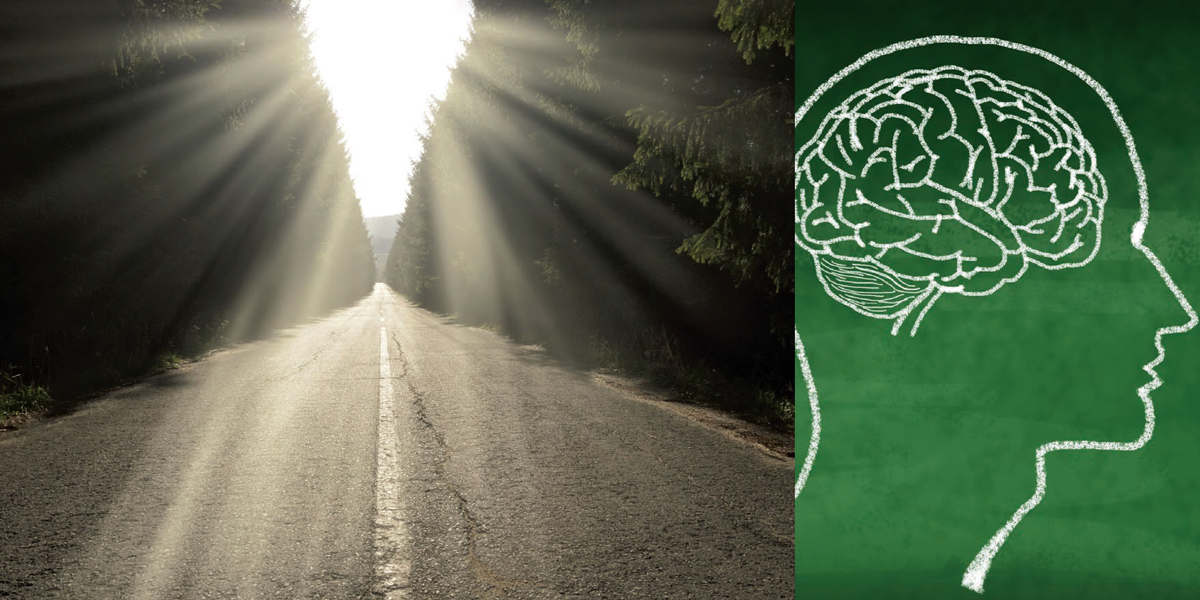“Perform action, Arjuna, established in yoga, renouncing attachments and even-minded in success and failure—yoga is equilibrium.” – The Bhagavad Gita
“I wonder what he thinks of me?” “did I get a good grade?” “Why didn’t I get that promotion?” “Her car is newer than mine.” “One day I’ll have as much money as him.” For most of us, if we are honest with ourselves, internal dialogue of this kind is constantly going on. Our mind analyzes our successes and failures, judging and comparing, planning and fearing for the future. Yet as Bob dylan reminds us, in Love Minus Zero/No Limit:
“Some speak of the future My love she speaks softly She knows there’s no success like failure And that failure’s no success at all.”
All our judging, comparing, analyzing, hoping and fearing creates a state of constant stress and anxiety. So next we want to relieve our anxiety by doing some yoga. And yoga postures, or asanas, offer excellent stress-relief. Yet yoga is far more than a workout, an exercise program, a sport or a hobby. Yoga means to yoke the mind—to yoke the small self who runs around worrying to the Self that never changes. This is yoga for the mind. Bhagavad Gita, the conversation between Arjuna, representing the individual self, and krishna, representing the changeless Self, is the instructional manual of yoga for the mind. krishna, the charioteer, is the yoga teacher, Arjuna the perplexed yoga student, and the yoga studio is dharmakshetra, the battlefield of everyday life.
To use the owner’s manual to the mind that the Gita provides, you first have to appreciate what model of psyche you are driving in this life. krishna offers not just one but three distinctive methods of yoga for the mind, suited to individuals of different temperaments. These temperaments are described in Ayurveda as Vata, Pitta and Kapha. The Vata individual has an airy, spacy nature and a lot of mental activity. Vata’s mind is constantly on the move, thinking, fantasizing and philosophizing. So Vata needs to train the mind through the yoga of wisdom and the path of meditation. The Pitta person has a fiery nature, high ideals and plenty of ambition. Pitta is always busy with so many important things. The Pitta person is a person of action. So Pitta needs to train their mind through the yoga of action and the path of work. And the kapha type has a watery and earthy nature and is sentimental and caring. kapha is loving and loyal but gets deeply attached and possessive. So kapha needs to train their mind through the yoga of devotion and the path of love. now let us take a look at each of these yogas in more detail.
The yoga of wisdom is known in Sanskrit as Jnana yoga. The essence of this path is to separate the unreal from the real.
“The unreal never is; the Real never is not. This truth indeed has been seen by this who see the True.” – The Bhagavad Gita
It is our inability to distinguish the real from the unreal, the ephemeral from the permanent that causes us immense stress and worry. We all desire happiness, yet when we cannot distinguish what is real and true, unhappiness is bound to follow. We seek our happiness in things that cannot last forever, rather that being anchored in the changeless happiness of our true nature. In his famous poem Adonais, Shelley writes:
” The One remains, the many change and pass; Heaven’s light forever shines, Earth’s shadows fly; Life, like a dome of many-coloured glass, Stains the white radiance of Eternity, Until Death tramples it to fragments. — Die, If thou wouldst be with that which thou dost seek! “
Shelley, meditating on the death of his dear friend keats, points to death as the opportunity to awaken “from the dream of life.” Yet we can also awaken from the dream while still very much alive, through the path of meditation. Just as we like to have a nice yoga mat for our asanas, we begin our practice of the yoga of wisdom by creating a special place to meditate. When possible, we can meditate outdoors in a beautiful and peaceful spot. But we can also create a special meditation spot in our home. If we have enough space, we can designate a room for meditation; otherwise, we can set up a special corner or even fix up a large closet as a “cave.” Meditating regularly in the same space is a support for our practice. Our meditation seat should be made of natural fibers. I like to practice on a felt rug; others may prefer a cotton zabuton and zafu. Use your special seat only for meditation.

next, we need to take our seat correctly, sitting with a straight back and neck. krishna in the Bhagavad Gita suggests meditating with open eyes, gaze directed to the tip of the nose, while other lineages and traditions recommend closing the eyes gently. Engaging in the yoga of wisdom is easier said than done. not just our practice time, our whole lifestyle needs to be designed to support awakening. If we overeat or don’t sleep enough, we will be dull and sleepy in our meditation practice. If we don’t eat enough, or over-stimulate ourselves, our mind will be agitated and will not settle. Throughout the day, it is important to attend to a lifestyle that is balanced and supports our meditation practice.
Even for Arjuna, a great warrior and krishna’s closest friend, the yoga of wisdom sounds daunting at first.
“O Krishna, the mind is so restless, turbulent, strong and obstinate.
Trying to control the mind is like trying to gather the wind!” – The Bhagavad Gita
The answer is to have great patience and never give up. little by little, step -by-step, one practice session at a time, the mind becomes less turbulent and we inch closer to the goal of the yoga of wisdom—a mind like a lamp in a windless place, never flickering away from the knowledge of the Real.
Karma yoga, or the yoga of action, is essentially about carrying out all our activities without feeling, “I am the doer.” So often our mind gets caught up in our activities and the results we expect to see in terms of fame, wealth and reputation. Our energy is being drained in the pursuit of results that are at best temporary.
As a young woman, I spent a year working eighty hours a week as a junior doctor in a country hospital— on call night and day. I was in charge of the men’s ward, women’s ward, coronary care, intensive care and emergency room. Whenever I sat for meditation, either I became sleepy or my beeper rang. From there I spent a year and a half in an enclosed contemplative abbey. I worked very hard there too, growing vegetables to feed thirty nuns and getting up before three in the morning to chant psalms. Finally I was a renunciant in India with ‘nothing’ to do—nothing except pounding my clothes on a rock in the river every day and walking miles along hot, dusty roads to get a bowl of rice or a cup of water. I saw that in all these varied conditions of life I was engaged in action and that my contemplative practice also flowed through these different lifestyles.
“He who sees the inaction that is in action and the action in inaction,
He is the wise person, the yogi, the all-accomplishing.” – The Bhagavad Gita

I also experienced a great revelation when I left the abbey. As a doctor I was quite indispensible. Yet when I re-emerged after eighteen months in seclusion, I saw clearly that everyone had been perfectly fine without me! I was not the doer. Various actions flowed through me, be they suturing lacerations or moving molehills or scrubbing a sari. These actions did not change or affect who I really am. And so it was that on the hot and dusty roads of central India, I learnt the yoga of action. do the duty that comes your way without caring about the fruits—in terms of gain and loss.
Renouncing the fruits of our actions does not give us license to do our actions in a careless or half-hearted way. When we perform any action for its own sake rather than for a result, the action itself requires our full attention and must be done with utmost excellence. As the Bhagavad Gita says, “Yoga is skill in action.”
As we come to Bhakti yoga, the yoga of devotion, we move from the head and hands to the heart. nowadays we view the heart and mind as separate, but in ancient times the heart was seen as the seat of the mind. So Bhakti yoga is yoga for the mind—the heart-mind. like karma yoga, Bhakti yoga can be practiced throughout our daily life.
“Whatever you do, whatever you eat, whatever you offer in sacrifice, whatever you give
Whatever austerity you practice, do this, O Arjuna, as an offering to Me.” – The Bhagavad Gita
This simple practice of “offering it up,” as we used to say in the abbey, imbues all our daily actions with the radiance of devotion. This path is considered as the Royal Road or the king’s highway. The metaphor here refers to the fact that other roads are narrow, winding and circuitous, whereas the king’s highway is broad and straight. In contemporary language, we might say that Bhakti yoga is an expressway. no education or qualifications are needed for this easy type of yoga for the mind. We can practice Bhakti yoga when we sit up at night with a sick child, stand in front of a classroom or clean up after an elderly incontinent parent. We can also practice while we enjoy a concert or make love to our beloved. Remembering that the person we are serving, enjoying or relating to is simply a form of God, we offer all our experiences in service of the divine.
“The Karma yogi can only practice in daily life with a basis of wisdom acquired through meditation. And the Bhakti yogi needs wisdom and Karma yoga as a foundation for developing genuine devotion. In the end, all forms of yoga for the mind lead to the heart, love and devotion.”
Although we have been discussing three different yoga the fact is that they are integral to one another—it’s just a matter of emphasis. The practitioner of the yoga of wisdom still has to work, as I did when living as a wandering renunciant. So when working they need to bring their wisdom into play in practicing desire-less action. The karma yogi can only practice in daily life with a basis of wisdom acquired through meditation. And the Bhakti yogi needs wisdom and karma yoga as a foundation for developing genuine devotion. In the end, all forms of yoga for the mind lead to the heart, love and devotion. This devotion flows not just towards an abstract ideal of the unseen divinity, but also expresses itself towards the visible form of the divine, meeting us in each moment in each person, in each living being, we encounter.
 Alakananda Ma graduated as a physician from St. Bartholomew’s Hospital Medical College. In 1980, she embarked on a five-year spiritual pilgrimage in India, meeting her Ayurveda teacher, Dr. Vasant Lad. One of the first Western physicians to dedicate her life to Ayurveda, Ma has been practicing Ayurveda since 1989 and is the principal teacher of Alandi Ayurveda Gurukula. alandiashram.org.
Alakananda Ma graduated as a physician from St. Bartholomew’s Hospital Medical College. In 1980, she embarked on a five-year spiritual pilgrimage in India, meeting her Ayurveda teacher, Dr. Vasant Lad. One of the first Western physicians to dedicate her life to Ayurveda, Ma has been practicing Ayurveda since 1989 and is the principal teacher of Alandi Ayurveda Gurukula. alandiashram.org.







